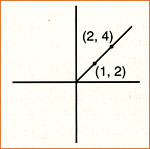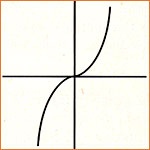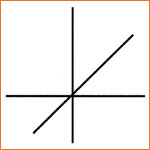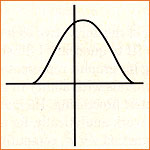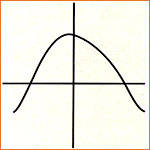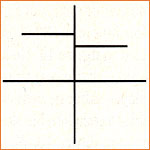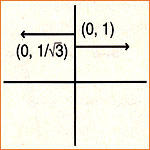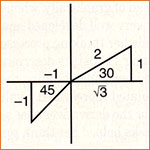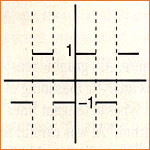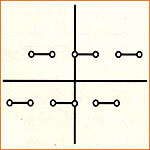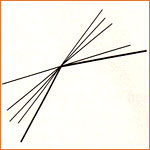| Back to . . . .
Leslie Aspinwall Kenneth L. Shaw |

Visualization in the Calculus Research on Teaching and Learning of the Derivative NCB Deposit # 21 |
This section . . .
presents research on
|
| The notion of derivative is
one of the most
important ideas in calculus. Any subject that uses calculus --
and
most subjects do -- uses applications of the derivative.
In September, 2002 Aspinwall and Shaw published an article in "Mathematics Teacher" on the contrasting styles of two students learning calculus concepts. One student's preference for analytic representations became evident while the other clearly preferred graphic representations. |
This web page is an informal, but
highly insightful,
presentation of research on university students' learning of the
derivative
from the calculus. In the left column is the graph of a given
function.
To its right are responses from students for the graph of the
derivative.
Click on the  for their feedback to the investigators.
for their feedback to the investigators.
Both Betty and Al could easily take the derivatives of the following three functions.
Thus, we conclude both had mastered the mechanical aspects of finding a derivative.
Can you calculate these derivatives?
| For the Instructor:
Traditional instruction in Calculus concentrates primarily on manipulating symbolic or analytic representations. Reform efforts over the past decade have promoted the understanding of both analytic and graphic representations of functions and derivatives. The research literature on teaching and learning clearly indicates that having multiple ways - for example, graphic and analytic - to represent mathematical concepts is beneficial. Cognitive psychologists urge instructors to provide a variety of tasks that allow students to become proficient in several areas. Briefly, the three main types of mathematical processing by individuals are described as analytic, geometric, and harmonic. |
 |
|
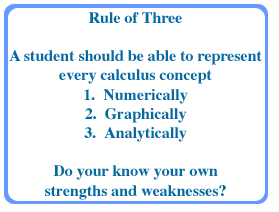 |
 |


